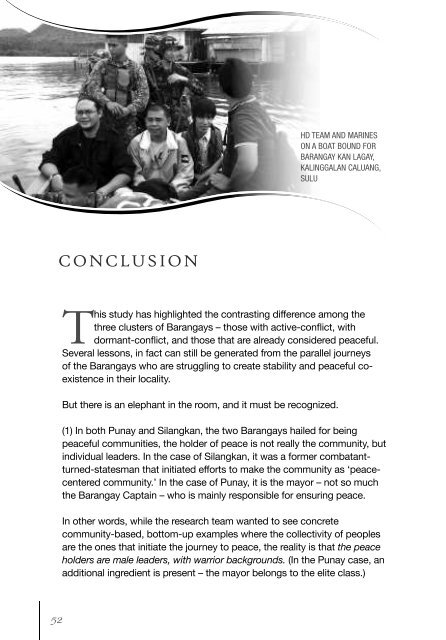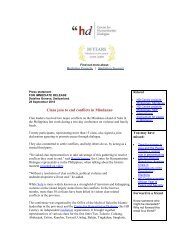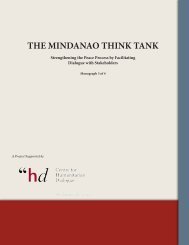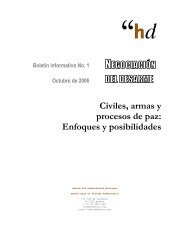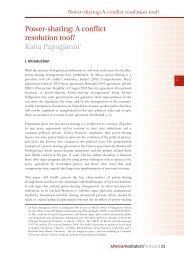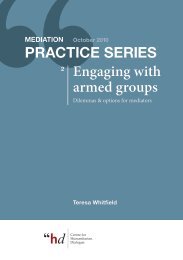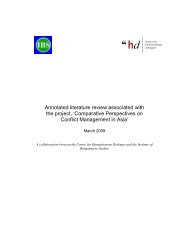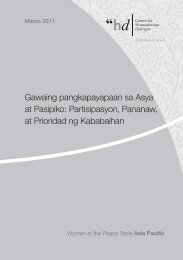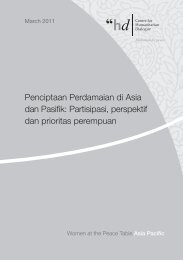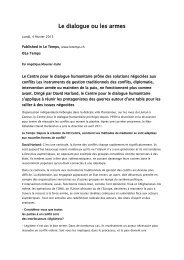Pagpati'ut - Centre for Humanitarian Dialogue
Pagpati'ut - Centre for Humanitarian Dialogue
Pagpati'ut - Centre for Humanitarian Dialogue
You also want an ePaper? Increase the reach of your titles
YUMPU automatically turns print PDFs into web optimized ePapers that Google loves.
HD TEAM AND MARINES<br />
ON A BOAT BOUND FOR<br />
BARANGAY KAN LAGAY,<br />
KALINGGALAN CALUANG,<br />
SULU<br />
CONCLUSION<br />
This study has highlighted the contrasting difference among the<br />
<br />
<br />
Several lessons, in fact can still be generated from the parallel journeys<br />
of the Barangays who are struggling to create stability and peaceful coexistence<br />
in their locality.<br />
But there is an elephant in the room, and it must be recognized.<br />
(1) In both Punay and Silangkan, the two Barangays hailed <strong>for</strong> being<br />
peaceful communities, the holder of peace is not really the community, but<br />
individual leaders. In the case of Silangkan, it was a <strong>for</strong>mer combatantturned-statesman<br />
that initiated ef<strong>for</strong>ts to make the community as ‘peacecentered<br />
community.’ In the case of Punay, it is the mayor – not so much<br />
the Barangay Captain – who is mainly responsible <strong>for</strong> ensuring peace.<br />
In other words, while the research team wanted to see concrete<br />
community-based, bottom-up examples where the collectivity of peoples<br />
are the ones that initiate the journey to peace, the reality is that the peace<br />
holders are male leaders, with warrior backgrounds. (In the Punay case, an<br />
additional ingredient is present – the mayor belongs to the elite class.)<br />
52


